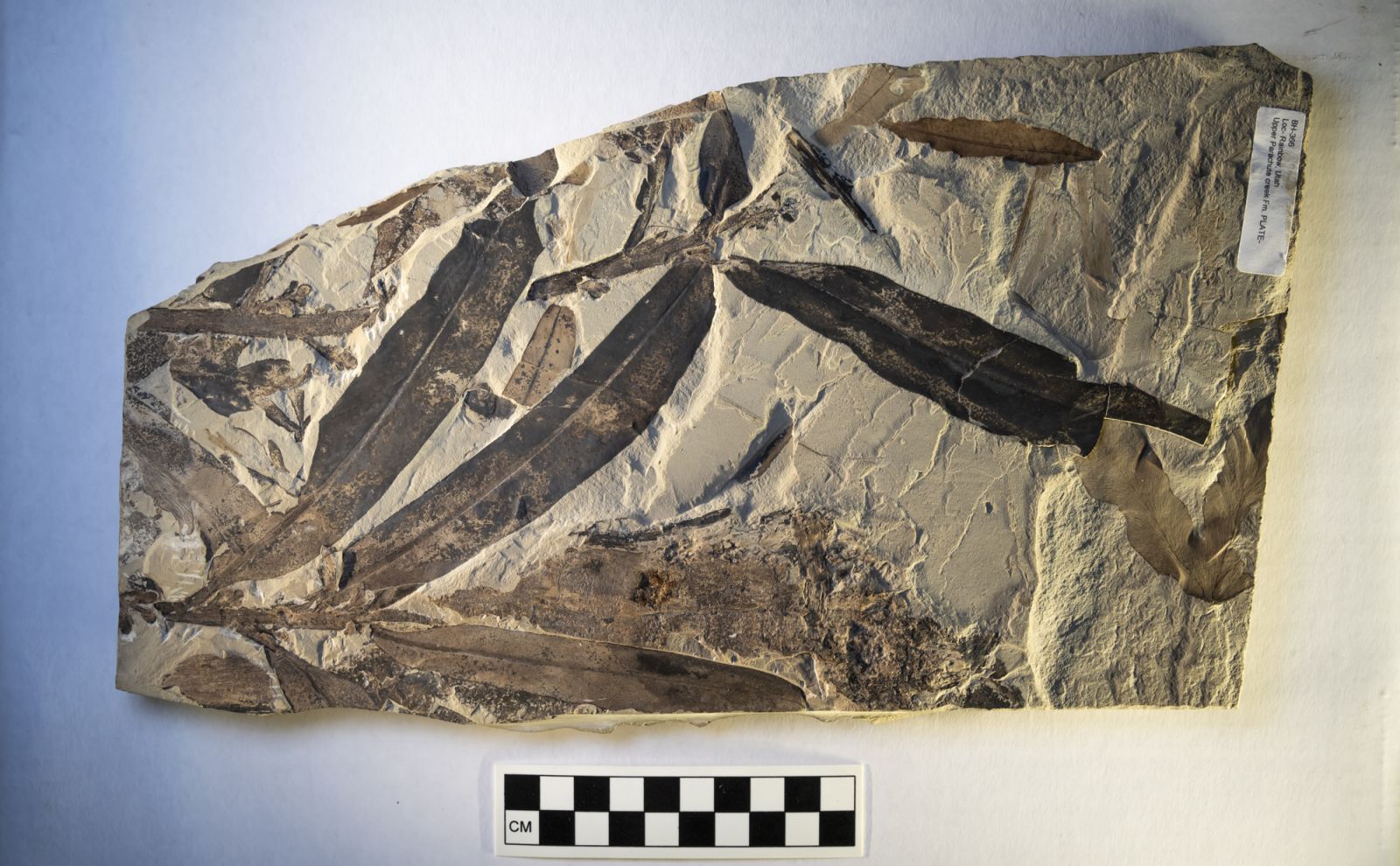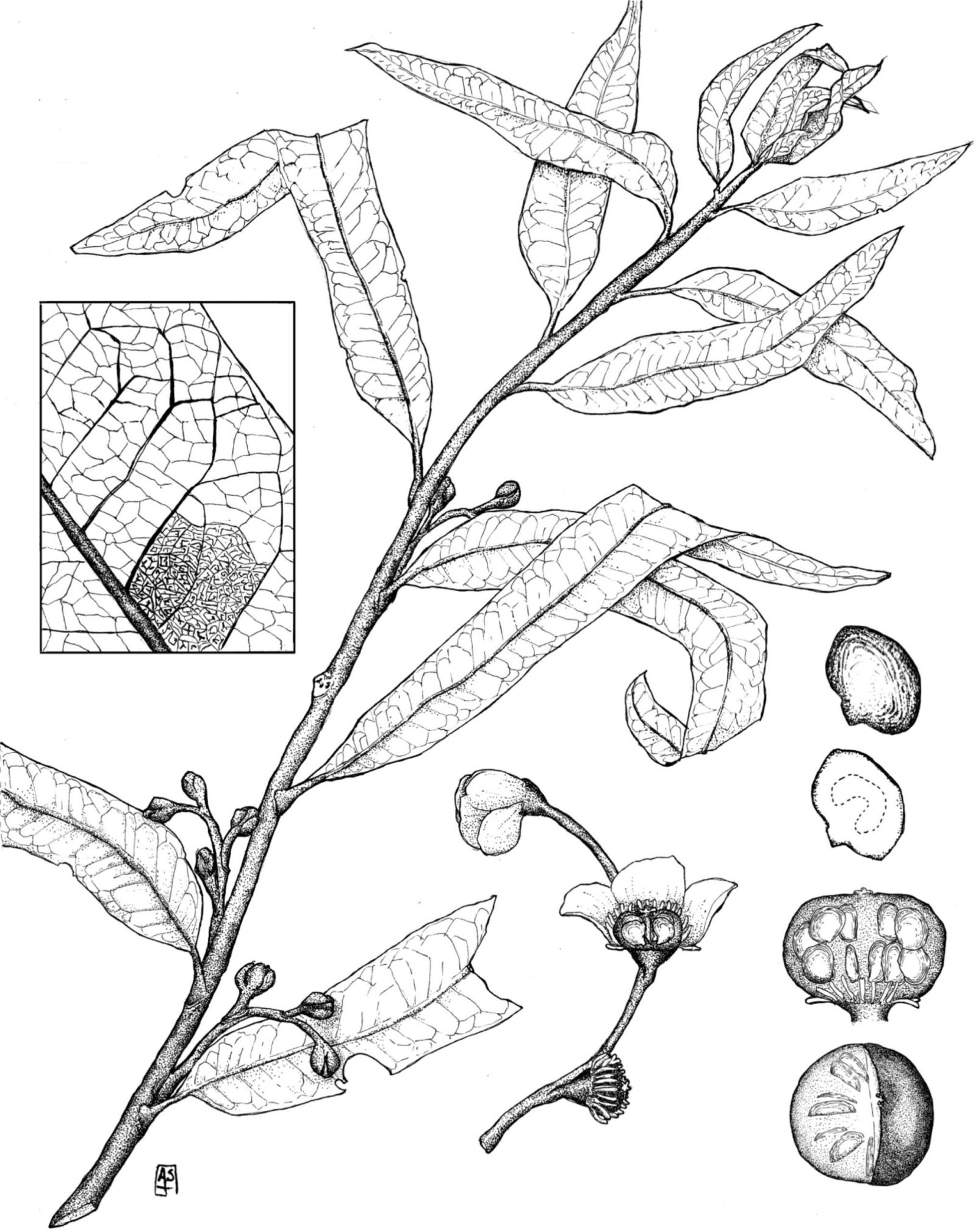This fossil plant belongs to nothing known, leaving humans and AI baffled 🌱
Published by Cédric,
Article author: Cédric DEPOND
Source: Annals of Botany
Other Languages: FR, DE, ES, PT
Article author: Cédric DEPOND
Source: Annals of Botany
Other Languages: FR, DE, ES, PT
Follow us on Google News (click on ☆)
In 1969, paleontologists discovered fossil leaves of a plant they named Othniophyton elongatum in the Green River Formation. This region, 47 million years old, once housed a lake where remarkably preserved fossils reveal the richness of past ecosystems.

Initial analyses suggested that this plant might be related to ginseng due to the shape of its leaves. However, this hypothesis was based on limited observations, with no study of its flowers or fruits.
Everything changed in 2021, when Steven Manchester, curator at the Florida Museum of Natural History, found a more complete specimen in Berkeley. This fossil included leaves, fruits, and flowers, providing a much clearer view of the organism.
Modern analyses revealed troubling features. For instance, the stamens remain attached to the ripe fruit, a phenomenon absent in modern plants. These details make it impossible to place the plant within any known botanical families.
Modern technologies, such as advanced microscopy and artificial intelligence, played a key role. They enabled the examination of microscopic seed structures and comparisons of this fossil against thousands of data points from other plant species.
Despite these tools, no link to modern or fossil families could be established. The plant appears to belong to a completely extinct lineage, a unique case in the history of paleobotanical discoveries.

Graduate student and paleoartist Ashley Hamersma created this reconstruction of [i]Othniophyton elongatum as it might have appeared when alive, featuring leaves, flowers, fruits, seeds, and persistent stamens.
Illustration by Manchester et al., 2024[/i]
This mystery raises questions about plant evolution and the gaps in our knowledge. Entire lineages may have disappeared without leaving descendants, calling into question current assumptions about past biodiversity.
For researchers, this discovery also underscores the importance of refraining from forcing classification when evidence is lacking. Studying Othniophyton elongatum allows exploration of unique evolutionary strategies and sheds light on why they may have failed in the face of environmental changes.
What is a fossil plant and how is its history studied?
A fossil plant is a preserved remnant of vegetation that lived in a distant geological past. These remains, often trapped in sediments or volcanic ash, offer a unique window into ancient ecosystems.
Fossils can include leaves, seeds, fruits, or even entire structures such as branches. These parts are studied through paleobotany, a discipline combining biology, geology, and technology.
Modern tools like advanced microscopy and artificial intelligence reveal details invisible to the naked eye. They help compare the fossils to present-day plants to understand their classification and evolution.
Finally, these analyses provide valuable clues about reproduction strategies, adaptations, and extinctions, enriching our understanding of plant history.